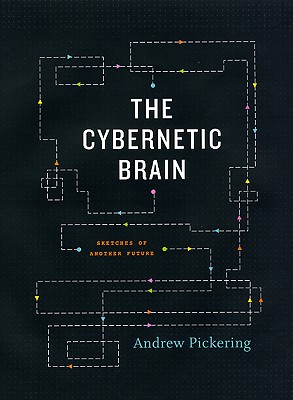The Cybernetic Brain: Gregory Bateson, Zen Schizophrenia, and Captain Beefheart
Did you know that in a game of cultural touchstones, it’s only a gesture or two that takes us from this:
“We do not live in the sort of universe in which simple lineal control is possible. Life is not like that.”—Gregory Bateson, “Conscious Purpose versus Nature” (1968, 47)
Today, we regard Gregory Bateson as the Kuhn-ian impresario behind systems-theory-based cybernetics—a friend of Jerry Brown’s and the ex-husband of Margaret Mead, Bateson was also the first to credit Samuel Butler’s The Way of All Flesh as originating our modern concept of the double bind. Bateson wrote about somatic practices and linked the functions of the body to other epistemological systems, ultimately focusing on man’s capacity for scientific arrogance and purpose-driven, autocratic understanding. Interestingly enough, Bateson made a name for himself outside of cybernetic circles through his association with Stewart Brand’s CoEvolution Quarterly in the mid-to-late 1970s (other contributors included Witold Rybczynski, Wendell Berry, and Ursula K. Le Guin), which popularized the ideas of space- and media-based practices, often in a New Journalism-inspired style. The other star of CQ? Lewis Mumford, whose talk influential talk “The Next Transformation of Man” was transcribed in the fourth issue.
Andrew Pickering’s The Cybernetic Brain: Sketches of Another Future explores the largely forgotten group of British thinkers—Bateson included—that tripped the light fantastic at the frontiers of psychiatry, systems management, politics, epistemology, and Eastern thought as the twentieth century came of age. In the excerpt that follows below, he locates Bateson’s ideas on schizophrenia and enlightenment alongside Western appreciations of Zen, as a form of what Foucault might call “gymnastics of the soul.”
***
Bateson noted a formal similarity between the double bind and the contradictory instructions given to a disciple by a Zen master—Zen koans. In the terms I laid out before, the koan is a technology of the nonmodern self that, when it works, produces the dissolution of the modern self which is the state of Buddhist enlightenment. And Bateson’s idea was that double binds work in much the same way, also corroding the modern, autonomous, dualist self. The difference between the two situations is, of course, that the Zen master and disciple both know what is going on and where it might be going, while no one in the schizophrenic family has the faintest idea. The symptoms of schizophrenia, on this account, are the upshot of the sufferer’s struggling to retain the modern form while losing it—schizophrenia as the dark side of modernity.
This, then, is where Eastern spirituality entered Bateson’s approach to psychiatry, as a means of expanding the discursive field beyond the modern self. And here it is interesting to bring in tow more English exiles to California, Alan Watts and Aldous Huxley. Watts was a very influential commentator on and popularizer of Zen Buddhism in the United States in the 1950s, and he was also a consultant on Bateson’s schizophrenia project. Two of the project’s principals, Haley and Weakland, “took a course from Watts on the parallels between Eastern philosophy and Western psychiatry, back in the days when he was Director of the American Academy of Asian Studies I think the focus on Zen offered us an alternative to the ideas about change offered in psychiatry in the 1950s” (Haley 1976, 107). It makes sense, then, to see Zen as a constitutive element of the Batesonian approach to schizophrenia. And, interestingly, Bateson’s cybernetics also fed back into Watt’s expositions of Buddhism. In The Way of Zen (1957), Watts drew on cybernetics as “the science of control” to explain the concept of karma. His models were an oversensitive feedback mechanism that continually elicits further corrections to is own performance, and the types of logical paradox that Bateson took to illuminate the double bind. Watts also discussed the circular causality involved in the “round of birth-and-death,” commenting that in this respect, “Buddhist philosophy should have a special interest for students of communication theory, cybernetics, logical philosophy, and similar matters.” This discussion leads Watts directly to the topic of nirvana, which reminds us of the connection that Walter and Ashby made between nirvana and homeostasis. . . .
Next, to understand Laing’s extension of Bateson it helps to know that Aldous Huxley had also evoked a connection between schizophrenia and enlightenment two years prior to Bateson (neither Bateson nor Laing ever mentioned this in print, as far as I know; Huxley cited D. T. Suzuki as his authority on Zen, rather than Watts). In what became a countercultural classic of the sixties, The Doors of Perception (1954), Huxley offered a lyrical description of his perceptions of the world on taking mescaline for the first time and tired to convey the intensity of the experience via the language of Zen philosophy—he speaks of seeing the dharma body of the Buddha in the hedge at the bottom of the garden, for example. But he also linked this experience to schizophrenia. Having described his experience of garden furniture as a “succession of azure furnace-doors separated by gulfs of unfathomable gentian,” he went on:
More by Andrew Pickering


